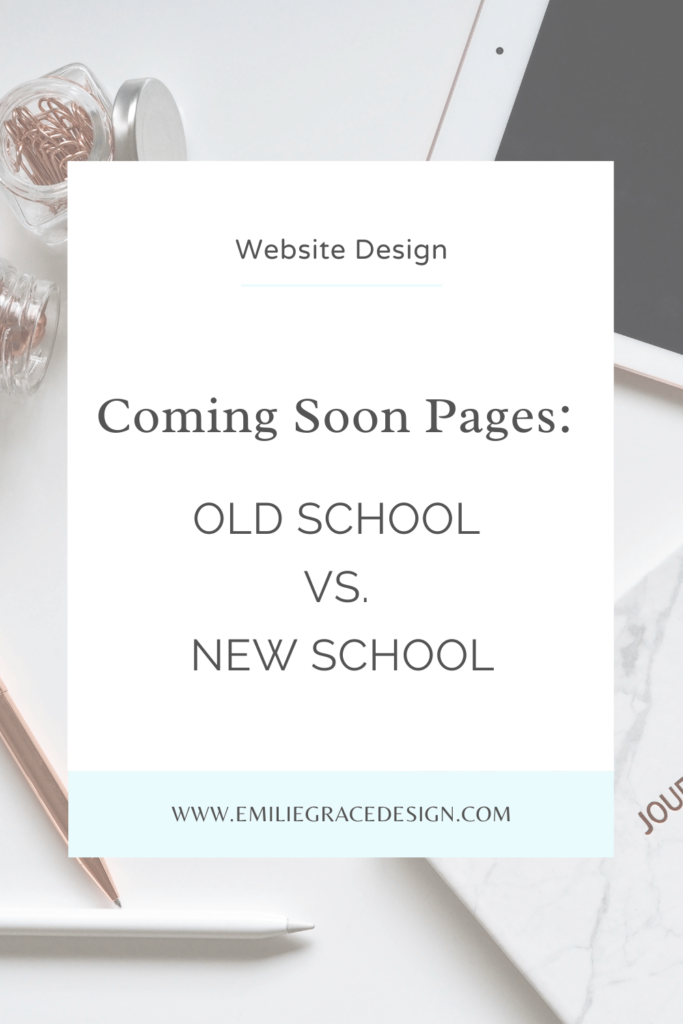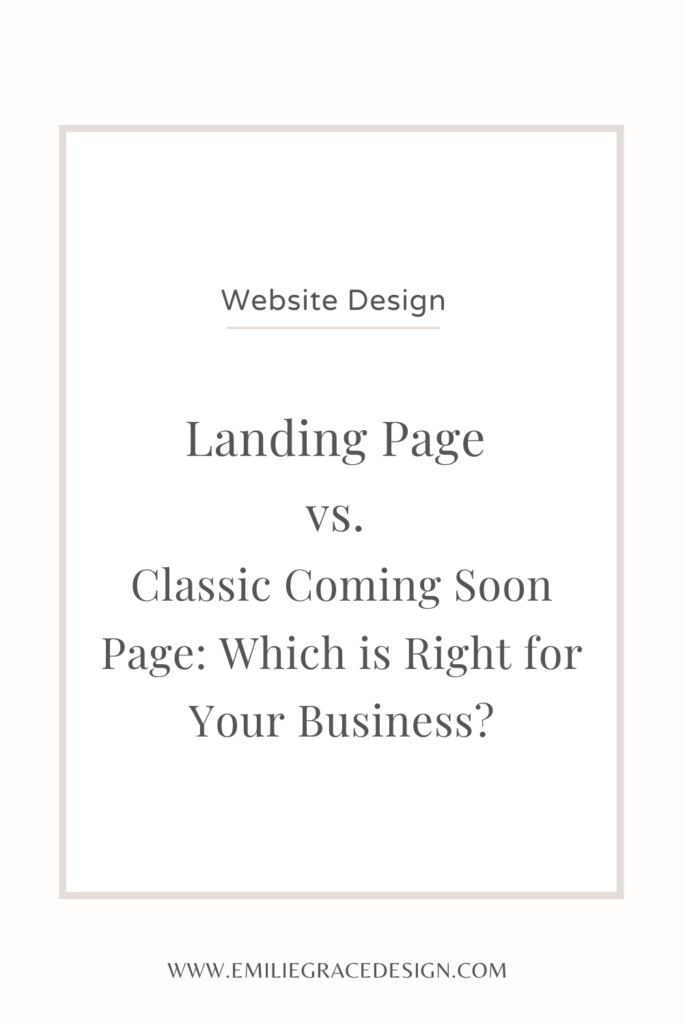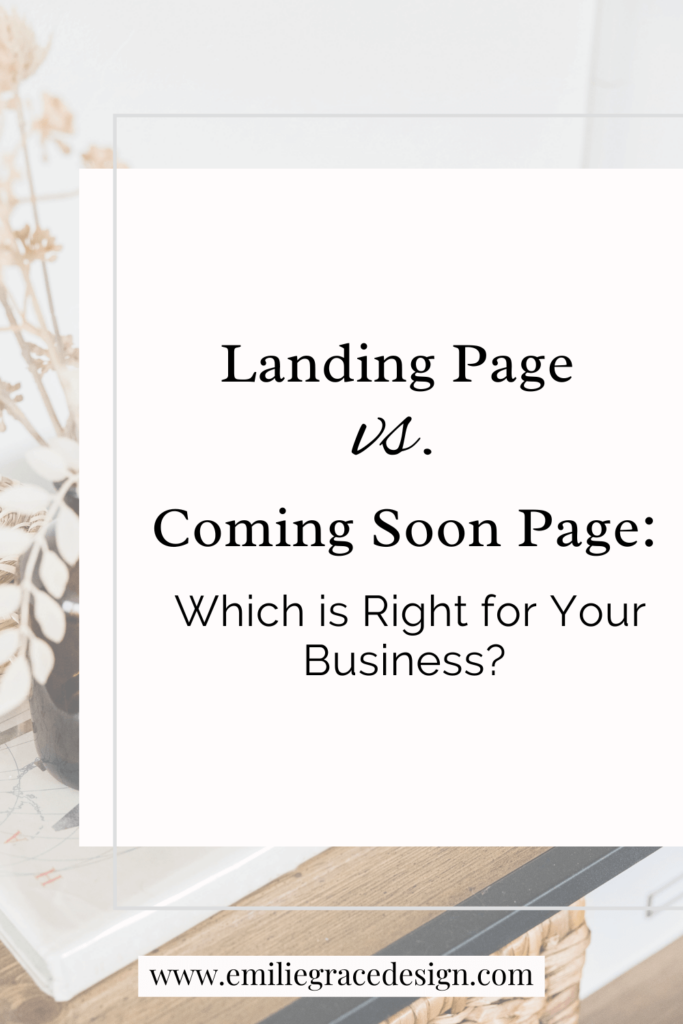Landing Page vs. Classic Coming Soon Page: Which is Right for Your Business?
Launching your new website for your business is an exciting time, but it’s important to build anticipation and excitement among your audience for the reveal of the new website.
Creating a “coming soon” page that tells your visitors what is to come is simple and effective. However, with so many options available, it can be challenging to determine which approach is right for you and your business.
In this blog post, I’ll explain the pros and cons of both a landing page as a coming soon page versus the classic coming soon page, so you can decide which one is best for your website launch.
Classic Coming Soon Page
The classic coming soon page is a simple, one-page website that announces the imminent launch of your new website. It typically includes a catchy headline, a brief description of what you do and an email signup form to capture leads. And sometimes they have a countdown timer to when the full website will be live.
Pros:
- Easy to set up: Classic coming soon pages are quick and easy to set up. You can create a basic page using a website builder like Showit
- Builds anticipation: The countdown timer (if you have one) on a classic coming soon page can create a sense of urgency and anticipation among your audience. It can also help you generate buzz on social media and other marketing channels.
- Collects leads: By including an email signup form, you can capture leads through build a mailing list of interested prospects. This can be valuable for future marketing campaigns.
Cons:
- Limited information: While a classic coming soon page can generate buzz and collect leads, it may not provide enough information for some visitors. If your audience is looking for more details about your product or service, they may lose interest or look elsewhere.
- Risk of losing momentum: If your launch is pushed back, and you do have a countdown timer, can become a source of frustration for visitors. This could lead to a loss of momentum and a drop in interest.
- Lack of signups: Just like I’ve mentioned above, if your visitors find that there is a lack of information on the page, chances are they will not signup for the updates and they will simply find it somewhere else.
Landing Page as a Coming Soon Page
Just like the classic coming soon page, a landing page is a standalone page. It’s designed to convert visitors into leads or customers. Unlike a classic coming soon page, a landing page includes more detailed information about your product or service and is designed to encourage visitors to take action.
Pros:
- Provides more information: A landing page allows you to provide more detailed information about your product or service than a classic coming soon page. This can help visitors understand the value of what you’re offering and encourage them to take action.
- Increases conversions: Because a landing page is designed to convert visitors into leads or customers, it can be more effective at driving conversions than a classic coming soon page.
- SEO benefits: A coming soon landing page can help improve your website’s SEO by providing a temporary web page that search engines can crawl and index. This can help your website rank higher in search engine results when your website is officially launched. Additionally, by including keywords related to your business, you can further improve your website’s SEO.
Cons:
- Risk of overwhelming visitors: A landing page with too much information or too many different types of calls to action can be overwhelming for visitors. If your messaging or design is unclear, visitors may become confused or frustrated and leave without taking any action.
- Potential for lower engagement: Unlike a classic coming soon page with a countdown timer, a landing page may not create as strong of a sense of urgency for visitors. If your messaging or design doesn’t capture their attention, they may not be motivated to take action.
- No website functionality: A coming soon landing page typically does not include any website functionality, such as a navigation menu or a blog. This can limit the ability to provide visitors with additional resources or engage with them in a meaningful way before your website launch.
Both classic coming soon pages and landing pages can be effective at building anticipation and excitement for your product or service launch. The right approach for you will depend on your goals. If you’re looking for a quick and easy way to generate buzz, a classic coming soon page may be the way to go. But if you want to provide more information and drive conversions, a landing page could be a better option. Whatever you choose, remember to keep your messaging consistent and your design eye-catching to maximize the impact of your business.
~ Pin For Later ~



Leave a Reply Cancel reply
©2016-2025 Emilie Grace Design | emilie@emiliegracedesign.com | Designed by Emilie Grace Design | Powered by Showit | Privacy Policy